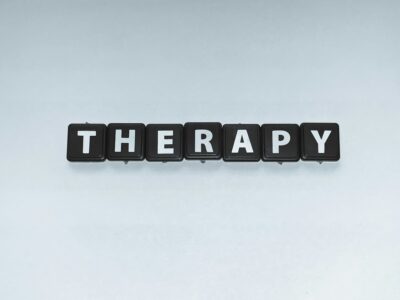Depression affects millions of people worldwide, creating barriers to daily functioning and overall well-being. While professional therapy remains invaluable, self-help CBT for depression has emerged as an accessible and effective approach that empowers individuals to take control of their mental health journey. Cognitive Behavioral Therapy (CBT) techniques can be successfully applied outside traditional therapy settings, offering practical tools to identify and challenge negative thought patterns that contribute to depressive symptoms.
The beauty of self-help CBT lies in its evidence-based foundation and practical application. Research consistently demonstrates that CBT techniques, when properly understood and implemented, can significantly reduce depression symptoms and prevent relapse. By learning to recognize the connection between thoughts, feelings, and behaviors, individuals can develop sustainable coping strategies that extend far beyond temporary relief.
This comprehensive approach doesn’t replace professional treatment when needed, but rather serves as a powerful complement or standalone resource for those seeking to understand and manage their depression more effectively. Whether you’re waiting for professional help, looking to enhance your current treatment, or prefer a self-directed approach, mastering CBT principles can provide the foundation for lasting emotional wellness.
Understanding the Core Principles of CBT for Depression
Cognitive Behavioral Therapy operates on the fundamental premise that our thoughts, emotions, and behaviors are interconnected in a continuous cycle. When depression takes hold, this cycle often becomes negative and self-reinforcing. Negative thoughts lead to depressed feelings, which then influence behaviors that reinforce the original negative thoughts, creating a downward spiral that can feel impossible to break.
The cognitive component of CBT focuses on identifying and examining thought patterns, particularly those automatic negative thoughts that arise spontaneously throughout the day. These thoughts often involve cognitive distortions such as all-or-nothing thinking, catastrophizing, or personalization. For example, someone experiencing depression might think “I’m completely worthless” after making a minor mistake, demonstrating the black-and-white thinking pattern that CBT helps address.
The behavioral aspect emphasizes how our actions and activities directly impact our mood and reinforcement of thought patterns. Depression often leads to behavioral patterns like social isolation, reduced activity levels, and avoidance of previously enjoyable activities. Self-help CBT for depression teaches individuals to recognize these patterns and gradually implement behavioral changes that can interrupt the negative cycle and promote positive emotional shifts.
Understanding these principles provides the foundation for effective self-help implementation. When individuals can identify their personal thought-feeling-behavior cycles, they gain the insight necessary to intervene at multiple points in the process, creating opportunities for positive change and symptom relief.
Essential Tools and Techniques for Self-Implementation
Successful self-help CBT for depression relies on several core techniques that can be learned and practiced independently. Thought monitoring represents one of the most fundamental skills, involving the systematic observation and recording of automatic thoughts, associated emotions, and triggering situations. This practice increases awareness of thought patterns that might otherwise operate below conscious awareness.
Keeping a thought record or mood diary serves as a practical tool for this monitoring process. Individuals can track daily situations, identify the thoughts that arise, rate their emotional intensity, and begin to notice patterns over time. This data collection phase is crucial for understanding personal triggers and recurring themes in depressive thinking.
Cognitive restructuring techniques form another essential component, teaching individuals to challenge and modify unhelpful thought patterns. This involves examining evidence for and against negative thoughts, considering alternative perspectives, and developing more balanced, realistic ways of thinking. The goal isn’t to replace negative thoughts with unrealistically positive ones, but rather to develop more accurate and helpful ways of interpreting experiences.
Behavioral Activation Strategies
Behavioral activation represents a powerful technique within self-help CBT that focuses on increasing engagement in meaningful, pleasurable, or achievement-oriented activities. Depression often leads to activity reduction and social withdrawal, which can perpetuate low mood and negative thinking patterns. By systematically scheduling and engaging in positive activities, individuals can begin to counteract these effects and create opportunities for positive experiences and mood improvement.
Core CBT Techniques for Managing Depression
Self-help CBT for depression centers around identifying and challenging the negative thought patterns that fuel depressive symptoms. One of the most effective techniques is cognitive restructuring, which involves recognizing distorted thinking and replacing it with more balanced, realistic thoughts.
Identifying Negative Thought Patterns
Depression often involves specific cognitive distortions such as all-or-nothing thinking, catastrophizing, and mental filtering. For example, someone might think “I’m a complete failure” after making a minor mistake at work. Through self-help CBT for depression, individuals learn to spot these patterns and question their validity.
A practical approach involves keeping a thought diary where you record triggering situations, the emotions felt, and the automatic thoughts that arise. This exercise helps create awareness of the connection between thoughts and feelings, which is fundamental to CBT principles.
Behavioral Activation Strategies
Another cornerstone of self-help CBT for depression is behavioral activation. Depression often leads to withdrawal from activities and social connections, creating a cycle of isolation and worsening mood. Behavioral activation involves gradually reintroducing pleasant and meaningful activities into daily life.
Start by creating a list of activities you once enjoyed or found meaningful. Begin with small, manageable tasks such as taking a 10-minute walk, calling a friend, or engaging in a hobby for 15 minutes. The key is consistency rather than intensity. As your energy and motivation improve, you can gradually increase the duration and complexity of these activities.
Problem-Solving Techniques
Self-help CBT for depression also emphasizes practical problem-solving skills. When facing overwhelming challenges, depression can make it difficult to see solutions or take effective action. The problem-solving approach breaks down complex issues into manageable steps.
First, clearly define the problem you’re facing. Then, brainstorm multiple potential solutions without judging their feasibility initially. Next, evaluate each option by considering the pros and cons. Finally, implement the most promising solution and monitor the results. If the chosen solution doesn’t work as expected, you can try another approach from your list.
Building Daily Structure and Routine
Creating structure in daily life is another valuable component of CBT self-help strategies. Depression often disrupts normal routines, leading to feelings of chaos and loss of control. Establishing a consistent daily schedule, even a simple one, can provide stability and a sense of accomplishment.
Include basic self-care activities like regular meals, adequate sleep, and personal hygiene in your routine. Schedule specific times for work, rest, social interaction, and enjoyable activities. Having structure doesn’t mean rigidity—flexibility is important, but having a general framework can provide direction during difficult days.
For those seeking additional support in their mental health journey, resources like digital therapy platforms can complement self-help efforts. Try Aitherapy now. to explore how technology-assisted tools can enhance your understanding and practice of cognitive behavioral techniques.
Remember that implementing these CBT strategies takes time and practice. Progress may not be linear, and setbacks are normal parts of the recovery process. The goal is to develop a toolkit of coping strategies that you can use consistently to manage depressive symptoms and build resilience over time.
When to Seek Professional Help
While self-help CBT for depression can be highly effective, it’s important to recognize when professional support is necessary. If you’re experiencing persistent thoughts of self-harm, severe symptoms that interfere with daily functioning, or if self-help strategies aren’t providing relief after several weeks, consider consulting a mental health professional.
Many therapists specialize in CBT and can provide personalized guidance that complements your self-help efforts. They can help you work through more complex thought patterns and provide additional strategies tailored to your specific situation. Professional therapy doesn’t replace your self-help work—instead, it enhances and supports your journey toward better mental health.
Creating Long-Term Success with CBT
The effectiveness of self-help CBT for depression depends largely on consistent practice and patience with yourself. Like learning any new skill, mastering CBT techniques takes time and repetition. Start with one or two techniques that resonate most with you, rather than trying to implement everything at once.
Keep track of your progress by noting improvements in mood, energy levels, and daily functioning. Celebrate small victories, such as challenging a negative thought successfully or completing a behavioral activation goal. These incremental improvements build momentum and reinforce the positive changes you’re making.
Consider exploring digital mental health resources that can provide additional support and structure to your self-help journey. Try Aitherapy now. to access tools that can help reinforce your CBT practice and provide ongoing guidance as you work toward recovery.
Final Thoughts
Self-help CBT for depression offers a powerful, evidence-based approach to managing depressive symptoms and building resilience. By combining cognitive restructuring, behavioral activation, problem-solving techniques, and structured routines, you can develop a comprehensive toolkit for mental wellness.
Remember that recovery is not a linear process, and setbacks don’t indicate failure. Each time you practice these techniques, you’re strengthening new neural pathways and building healthier thought patterns. With consistent effort and self-compassion, CBT strategies can become natural responses that help you navigate life’s challenges more effectively.
The journey toward better mental health requires courage and commitment, but the skills you develop through CBT will serve you well beyond your current struggles. Take the first step today by choosing one technique to practice, and remember that seeking support—whether through self-help resources, digital tools, or professional therapy—is a sign of strength, not weakness.
References
Beck, J. S. (2011). Cognitive behavior therapy: Basics and beyond (2nd ed.). Guilford Press.
Butler, A. C., Chapman, J. E., Forman, E. M., & Beck, A. T. (2006). The empirical status of cognitive-behavioral therapy: A review of meta-analyses. Clinical Psychology Review, 26(1), 17-31.
National Institute of Mental Health. (2022). Depression. Retrieved from https://www.nimh.nih.gov/health/topics/depression
Wright, J. H., Brown, G. K., Thase, M. E., & Basco, M. R. (2017). Learning cognitive-behavior therapy: An illustrated guide (2nd ed.). American Psychiatric Publishing.



